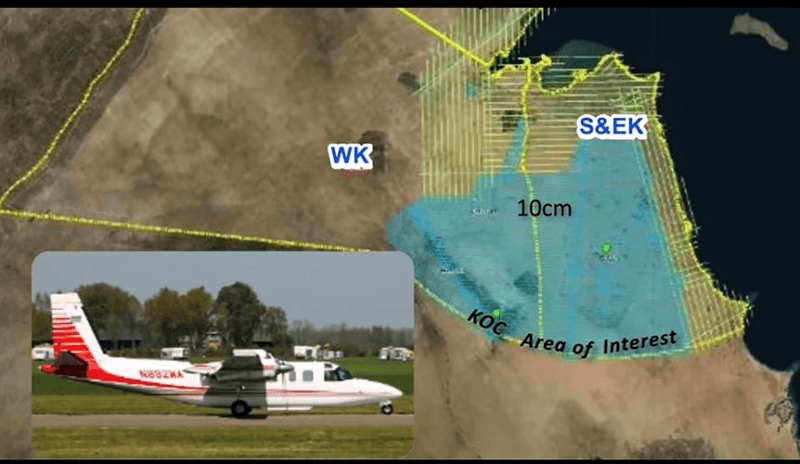Kuwait Oil Company is constantly striving to develop its tools and keep pace with modern technologies by enhancing the quality and accuracy of the data used for daily planning to support production operations and support decision-making for the implementation of current and future projects, in order to consolidate its pioneering role regionally and globally.
In the framework of this, the KOC has succeeded in updating the infrastructure plans and in all of Kuwait’s oil fields, with the aim of achieving the highest possible efficiency in connection systems and the collection of geographical data. A high-quality and accurate aerial survey project was implemented for all Kuwaiti fields, estimated at more than 8 thousand square kilometers. This is done by contracting with one of the international companies specialized in this field.
This project enabled, for the first time since its inception, to possess three-dimensional maps of all terrain of the oil fields, in addition to monitoring high-quality aerial photographs with an accuracy of 10 centimeters.
The project also aims at the integrated linkage with Geographic Information Systems (GIS), which are widely used in the operations of the KOC.
The project also aims to apply modern technologies for the development and marketing of information and materials management, where digital images resulting from aerial surveys are used to update the company’s data and to work in remote and rugged areas and inaccessible sites due to their danger without the need to expose individuals to risks. In addition, the data allowed high the high-resolution images are monitored for new details of all services and facilities of the company, and the plans are updated.
Therefore, the production of 3D data and laser ranging provides a full opportunity to be used in spatial analysis and hydraulic simulation and to contribute to the application of health, safety and environmental measures.
This achievement serves many of the pillars on which the New Kuwait Vision 2035 depends, on which the oil sector is based.
It should be noted that geographic information systems work to improve the work mechanism and determine the locations of wells and classify the types of water wells in the fields according to different scales transferring them to enhance quality, saving time, effort and cost, and saving lives during the pipeline construction process.
The benefits of GIS include:
— Reducing the time for preparing maps: In the past, a single map needed several days, and sometimes up to a month, in order to be prepared and drawn, to define the lines and terrain in it, and to name the places within it, while at the present time and with the use of geographic information systems, the preparation of the map takes a few hours to be ready.
— Reducing the number of workers: The procedures for drawing maps included large numbers of workers, but with the technological development and the use of geographic information systems that carried out the function of drawing, preparing and adding colors to maps, the number of workers was reduced.
— Reducing the financial cost: Geographic Information Systems contributed to reducing the financial cost that was spent on providing mapping paper, drawing pens and colors, and although often high basic costs are paid to establish geographic information systems, they contribute to saving money afterwards because they You only pay once.

